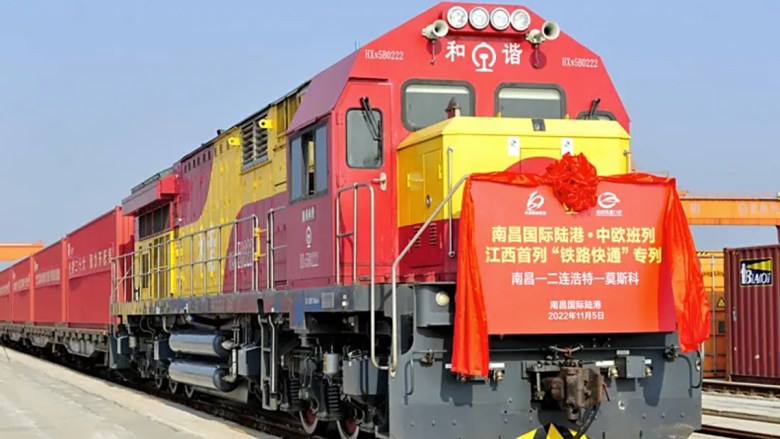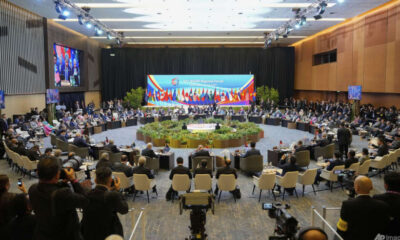Politics
Poland Closes Border, Disrupting China-EU Rail Trade

Poland has taken decisive action by rejecting China’s request to reopen its border with Belarus, following a series of incursions by Russian drones. This move has escalated political tensions between China and the European Union, disrupting a crucial trade route that facilitates the flow of goods between the two regions. The closure of the Małaszewicze crossing, vital for the China-Europe Railway Express, reflects Poland’s increasingly stringent security measures.
The Polish government’s decision came after an incident on September 9, 2023, when over 20 unmanned aerial vehicles from Belarus and Russia entered Polish airspace. While Moscow and Minsk denied any hostile intent, Warsaw characterized the flights as provocations that violated its sovereignty. In a meeting with Polish Deputy Prime Minister Radosław Sikorski, Chinese Foreign Minister Wang Yi was unable to persuade Poland to reverse its stance.
Chinese state media and commentators quickly criticized Poland’s actions, warning that the disruption could threaten billions of euros in trade between China and the EU. Observers suggested that NATO’s influence might be behind Warsaw’s decision, implying that the United States could benefit from a shift in logistics away from Eurasian rail corridors. A columnist writing under the pseudonym “Cuadrado” remarked, “Who is playing with the geopolitical powder keg and whose lifeline is being put at risk? This incident is rooted in complex geopolitical rivalries.”
Impact on Trade and Supply Chains
The China-Europe Railway Express has emerged as a critical component of EU-China commerce, with the line running through Belarus into Poland. It carries approximately 90% of all rail freight between China and Europe. In 2024, cargo volumes on this route increased by 10.6% year-on-year, while the value of goods surged by 85% to around 25.07 billion euros (approximately US$27 billion). The rail link now accounts for roughly 3.7% of all EU-China trade, a notable increase from 2.1%% the previous year.
The growth in trade volume has been driven largely by high-turnover e-commerce and valuable industrial shipments. For Chinese e-commerce giants such as Temu and Shein, this rail route has been crucial for reducing delivery times and avoiding the high costs associated with air freight. Publicly available data indicates that about 60% of the cargo consists of electronics, machinery, lithium batteries, and electric vehicles, which are essential for timely deliveries.
In light of the border closure, Polish Interior Minister Marcin Kierwiński stated that the crossings would only reopen when it is deemed safe, emphasizing the tense situation caused by increased drone activity in Polish airspace. Meanwhile, China’s Foreign Ministry spokesperson Lin Jian expressed hope for the restoration of safe operations for the railway, highlighting its significance for both China and Poland.
Broader Economic Consequences
The closure has adversely affected many freight forwarders, with reports indicating that Baltic carriers have tripled container rates to around $9,500, surpassing peak levels observed during the COVID-19 pandemic. Observers have noted that the China-Europe Railway Express, originally designed for efficient transport, has become entangled in geopolitical disputes, ultimately harming both Chinese exporters and European importers.
As shippers seek alternatives, many are turning to ocean routes between Asia and Europe, which may reduce unit costs but double transit times, complicating just-in-time delivery requirements. Others are exploring the Middle Corridor, which bypasses Russia and Belarus but introduces additional costs and logistical challenges. According to a columnist from Hebei, the disruption has not only strained trade but has also undermined trust in globalization, complicating long-term commercial relationships.
Strategic solutions are emerging, with companies diversifying their transport routes to mitigate risks associated with reliance on Poland. Options include the Northern line through Russia and Finland, a Southern line via Turkey, and Central Asian overland routes. The planned China-Kyrgyzstan-Uzbekistan railway aims to enhance efficiency by shortening the China-Europe distance significantly.
As the situation remains uncertain, the ongoing economic fallout serves as a reminder of the fragile balance between security and trade in an increasingly interconnected world. The implications of Poland’s border closure extend beyond immediate trade disruptions, raising questions about the future of Sino-European relations and the broader geopolitical landscape.
-

 Lifestyle3 months ago
Lifestyle3 months agoHumanism Camp Engages 250 Youths in Summer Fest 2025
-

 Sports3 months ago
Sports3 months agoDe Minaur Triumphs at Washington Open After Thrilling Comeback
-

 Business4 months ago
Business4 months agoKenvue Dismisses CEO Thibaut Mongon as Strategic Review Advances
-

 Sports4 months ago
Sports4 months agoTupou and Daugunu Join First Nations Squad for Lions Clash
-

 Top Stories4 months ago
Top Stories4 months agoColombian Senator Miguel Uribe Shows Signs of Recovery After Attack
-

 World4 months ago
World4 months agoASEAN Gears Up for Historic Joint Meeting of Foreign and Economic Ministers
-

 Business4 months ago
Business4 months agoOil Prices Surge Following New EU Sanctions on Russia
-

 Health3 months ago
Health3 months agoNew Study Challenges Assumptions About Aging and Inflammation
-

 Entertainment3 months ago
Entertainment3 months agoDetaşe-Sabah Violin Ensemble Captivates at Gabala Music Festival
-

 Entertainment3 months ago
Entertainment3 months agoBaku Metro Extends Hours for Justin Timberlake Concert
-

 Business4 months ago
Business4 months agoU.S. House Approves Stablecoin Bill, Sends to Trump for Signature
-

 Top Stories4 months ago
Top Stories4 months agoRethinking Singapore’s F&B Regulations Amid Business Closures









